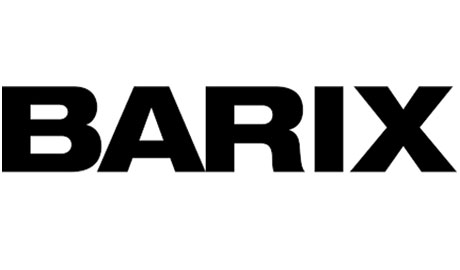 |
| Easy-to-use IP audio system, distributed in the U.S. by LineQ, cost-effectively overcomes geographic challenges for Massachusetts-based community radio station |
For non-commercial, community-focused radio stations like WARA 1320AM, finding cost-effective yet reliable solutions that enable them to reach their listeners even in times of emergency is essential. When Attleboro Access Cable System (“DoubleACS”) in Massachusetts took ownership of WARA-AM last year, it turned to Barix Audio over IP devices to overcome geography-imposed technical challenges and deliver these benefits for its studio-to-transmitter link (STL).
Originally a television company, DoubleACS’ first foray into radio came in 2011, partnering with a commercial AM radio station to provide emergency information to the community during a major storm that left residents without power—and thus television service—for many days. Years later, DoubleACS took over the license of that same station, converted it to non-commercial operation and moved its studios before bringing back the locally-significant WARA call letters. Today, WARA’s 5000-watt signal reaches the Attleboro area as well as parts of Rhode Island and south-eastern Massachusetts, delivering local news, talk, public affairs, educational, music and “old time radio” programming.
Issues during installation
When setting up WARA’s new studio, the local terrain created issues for the STL between the station and its transmitter site seven miles away. “Even with 200-foot towers, the local geography meant we couldn’t get high enough over the tree cover to get line-of-sight,” explained Jim Jones, operations manager at DoubleACS. “Beyond the technical considerations, getting frequency licenses in our area is a challenge, and the equipment to implement a traditional microwave STL was expensive. I am very comfortable with IP-based technologies, so it was a simple decision to use an IP STL to overcome these obstacles.”
Jones had seen Barix solutions—distributed in the U.S. by LineQ—at the previous studio that DoubleACS acquired WARA’s license from, but still thoroughly researched his options for IP audio codecs. That research validated Barix as his best choice. “We already knew that Barix was proven, and we found solutions from alternative vendors to be much more expensive and require a lot more handholding and administration,” he said. “The Barix devices are extremely easy to use, and cost much less than other IP audio products we looked at. And compared to the equipment for a wireless STL system, the Barix solution was on the order of ten times less expensive.”
| "The Barix devices are extremely easy to use, and cost much less than other IP audio products we looked at" |
Cost effective products
Jones chose a Barix Instreamer as the encoder for the studio, and an Exstreamer 100 as the decoder at the transmitter site. “With only one signal, we didn’t need the extra features or sophistication of the higher-end Barix models,” Jones recounted. “As such, we chose the most cost-effective model that met our needs, as it also made buying redundant units for our backup operations more affordable.”
Setting up the Barix units proved fast and easy. After listening to them audibly “speak” their assigned IP addresses, Jones configured the Barix devices through a browser on his laptop using their built-in web interface. After configuring security, selecting his input source, and choosing his preferred audio codec, the system was operational. “The whole process took maybe around five minutes’ total,” he recalled.
Rich sound quality with PCM audio
Jones chose PCM audio for WARA’s STL. “Barix’s flexible support for multiple codecs was a big selling point for us, but we decided to go with the best quality we could for feeding our transmitter site. PCM gave us the richest sound with no artefacts.” A Comcast cable Internet link is backed up by Verizon DSL connectivity for fault-tolerant redundancy. The Barix units are automatically switched between the two connections if a link fails, minimising the interruption of the radio signal to at most two or three seconds.
In addition to its ease of use, the Barix STL solution has also lived up to Jones’ reliability expectations. “I think I’ve only looked at the Barix units once since we installed them a year and a half ago. I don’t know of many other products that are as ‘set and forget’ as they are,” he concluded.




